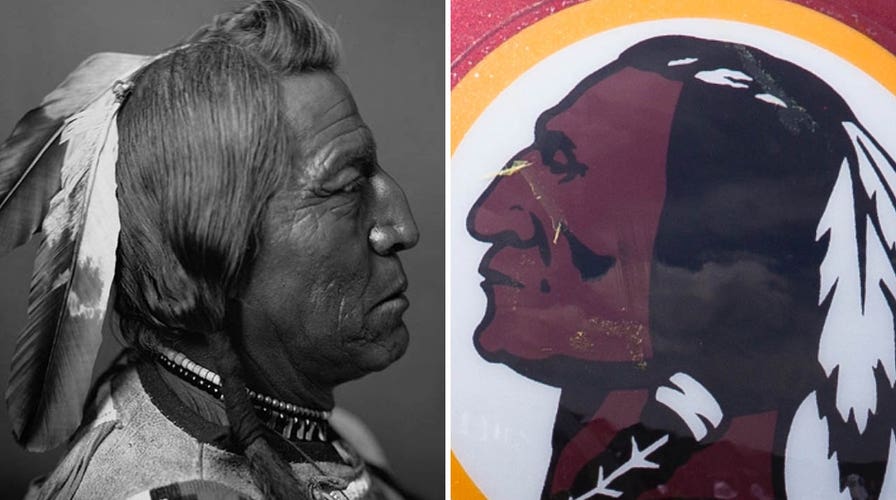an Indian head profile with braids and feathers, similar to the design on U.S. buffalo nickels. It was used by the franchise for nearly five decades, including during all three Super Bowl victories, until prior team owner Daniel Snyder stopped using it over complaints that the logo, as well as the team’s former name, were racist. Wetzel’s grandson Ryan said the logo is actually a source of pride for his family and his tribe, and he is demanding the team bring it back in some form or fashion. “This is the first step. This isn’t the end all be all, I want that known,” Wetzel said. “This is something that is going to be continuing. This is a nice first step in a healthy direction, it’s a positive for the Commander’s organization and the NFL.” #Commanders #Redskins #RaiseHail #HTTR #NFL
IN WITH THE OLD: Washington Commanders to Honor Legacy of Blackie Wetzel at 2025 Home Opener
In a heartfelt nod to its controversial and complicated past, the Washington Commanders are set to honor the legacy of Walter “Blackie” Wetzel, the man behind the iconic feathered profile that adorned the Washington Redskins’ helmets for nearly half a century. The team has extended an invitation to Wetzel’s grandson, whose name has not yet been publicly disclosed, to attend the 2025 home opener against the New York Giants this September. According to team officials, a special ceremony is planned to recognize Wetzel’s contributions to the franchise’s visual identity — and to the broader cultural conversation about representation, pride, and heritage.
A Reexamination of Legacy Wetzel, a member of the Blackfeet Nation and a former president of the National Congress of American Indians, played a significant role in the redesign of the team’s logo in 1972. His vision was simple but profound: to replace the stylized letter “R” used on the helmets with a more respectful and accurate representation of a Native American leader. The resulting image — a profile of a Native man with traditional feathers and braids — was based on a composite of respected tribal figures and drawn in consultation with various Native communities.

Contrary to modern assumptions that the Redskins’ name and imagery were entirely imposed by non-Native interests, Wetzel’s involvement is a reminder that the story is more layered. For years, he advocated for a depiction that would reflect Native dignity and strength, and he believed the logo — when first introduced — achieved just that.
> “When I saw they had an ‘R’ on the helmet, I said, ‘Why don’t you put an Indian on it?’” Wetzel once said in an interview. “It would be more respectful. I got some pictures together and they picked one. That’s how it was born.”
Honoring a Complicated History
The ceremony during the home opener is not about reviving the past, officials clarify, but rather acknowledging the full scope of the team’s legacy — including the voices of Native Americans like Wetzel, who sought not erasure, but representation.
The Commanders — who changed their name from “Redskins” in 2020 under mounting public pressure — have since struggled with their new identity, alienating some fans while attempting to forge a new direction. In recent months, under new ownership led by Josh Harris and with a fan engagement strategy led by Magic Johnson, the team has emphasized a commitment to transparency, reconciliation, and rebuilding community trust.
> “This is not about bringing back a name or a logo,” said a team spokesperson. “This is about recognizing the contributions of an individual — a Native American — who shaped a part of our history and did so with pride and cultural intent.”
Fan and Community Reactions
Reactions to the announcement have been mixed but largely respectful. Some Native leaders have praised the gesture, especially given Wetzel’s standing within the Blackfeet Nation and Indian Country. Others urge caution, reminding the public that good intentions do not erase harm, and that the broader debate around Indigenous mascots remains sensitive and ongoing.
Among fans, especially older generations who grew up cheering for the Redskins, the move is seen as a bridge between tradition and progress. Many are welcoming the moment as an opportunity for healing and reconnection — and as a reminder that history should be confronted, not forgotten.
A Moment of Reflection at FedEx Field

During the halftime ceremony at the September home opener, the team plans to present Wetzel’s grandson with a commemorative plaque and display the 1972 logo on the stadium’s digital screens. A video montage will include archival footage of Wetzel and interviews with family members, historians, and former players who wore the helmet with his logo.
It is expected that Native elders from the Blackfeet Nation will also be in attendance, alongside NFL officials and local community leaders.
The event is shaping up to be one of the most poignant moments of the Commanders’ 2025 season — not for what it says about the future, but for how it acknowledges the complexity of the past.
Looking Ahead
As the Washington Commanders continue to define their new identity, gestures like these serve as important cultural touchpoints. By honoring Blackie Wetzel — not just as the designer of a logo, but as a Native leader with a vision — the team takes a step toward a fuller, more honest version of its history.
In doing so, they may not be returning to old names or logos, but they are returning to something deeper: respect for the people who shaped them, and recognition of the stories that deserve to be told — not erased.













